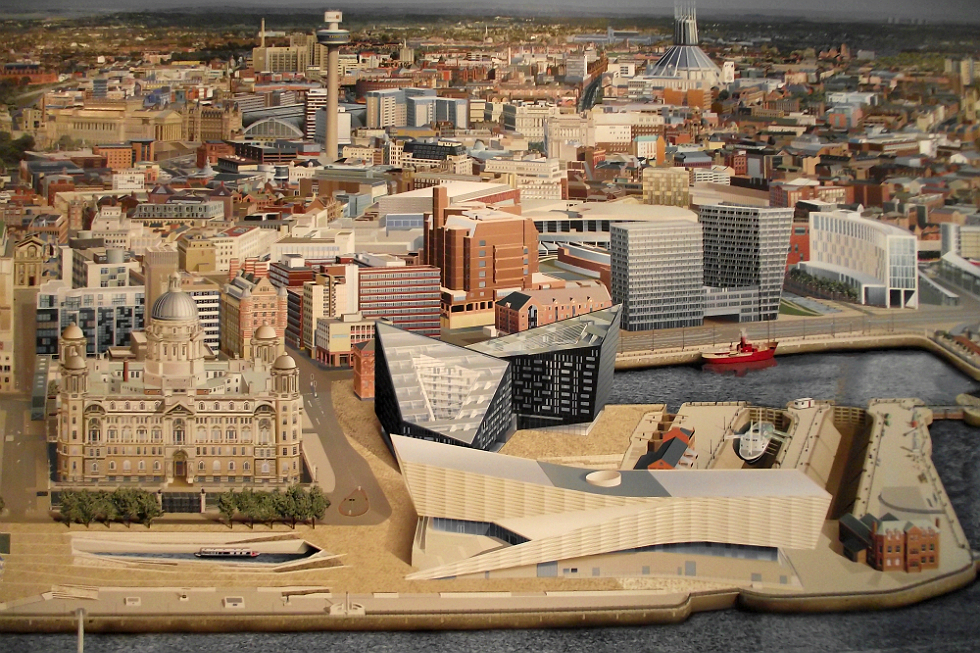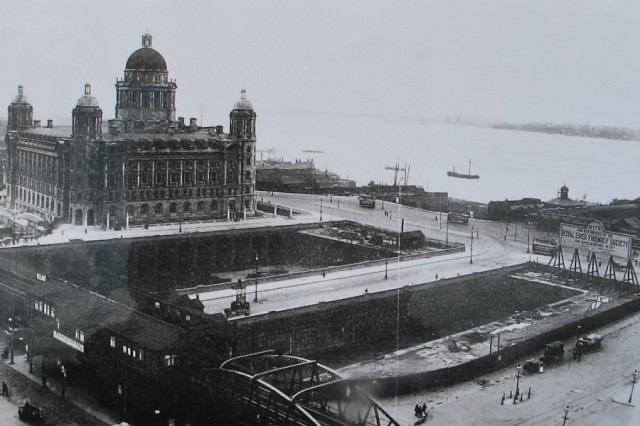Dreams and Ideologies – Architecture: Fashion and Folly

With the RIBA Stirling Prize for Architecture announced this evening, Kenn Taylor reflects on how the passage of time tends to weigh heavily on the popularity – or otherwise – of a building…
I once had a pleasant, short lived freelance job researching the history of two twentieth century buildings for a property company. One of them was an Art Deco cinema, Grade II listed and well loved. I was amused to find in contemporary press reports from its construction period, people arguing against it being built. They complained about it being constructed over an old pub, about its garish modern appearance, of the negative impacts of cinemas proliferating in cities – which were opening pretty much week to week in the 1930s.
It made me think of the distaste many in our era have of, say, chain coffee shops or supermarkets. It also reminded me of our very limited ability to understand how buildings either contemporary or of the recent past, will be judged in future. Anyone advocating for the saving of a Victorian railway station in the 1930s, an Art Deco lido in the 1960s, or a concrete bus station in the 1980s, would have risked being laughed out of the room. But, of course, here we are.
I used to joke when talking with people about this phenomenon that, at some point, there’d be a campaign to list a supermarket, which always raised a laugh. Now in 2019, Nicholas Grimshaw’s Camden Sainsburys has just been listed. “Ah, but that’s a rare, quality exception”, you might say. True, but it is also the case that an awful lot of Victorian or post-war Modernist buildings were derivative, and worse, unfit for their intended occupants. Not every building can be a St Pancras Station or Park Hill. But, after a certain point, the passage of time confers a degree of grace and ‘authenticity’.
In my native Merseyside, important well-loved, Grade I listed buildings like the Royal Albert Dock and the Royal Liver Building were, in the aftermath of their construction, deeply disliked by historians and many contemporary architects, who considered them crass and commercial. The city’s Oriel Chambers, the first glass curtain walled building in the world, was distressingly described in 1866 as a “vast abortion” in The Builder magazine.

Even the now beloved Glasgow School of Art provoked upon its completion the suggestion that Charles Rennie Mackintosh should be horsewhipped for having “shown his bare arse to the face of Glasgow”. These comments came from the well connected architects, academics and historians who you think may have been able to see past their own prejudices and personal tastes. But, to quote philosopher Eric Hoffer, “both the radical and the reactionary loathe the present.”
In general, we’re terrible judges of what will come to be valued from our own time in the future. Therefore, Dinky Toys from the 1950s are worth a lot of money, while many ‘collectables’ and heirlooms kept carefully in cabinets, are worthless. Of course, much of this is to do with the unrelenting cycle of fashion, turning every twenty, thirty or forty years, depending on who you ask, which applies as much to buildings and politics as records and clothing. The current generation rejects the work of its immediate forebears (and sometimes its peers) to look further back for inspiration from a supposed better time. The trouble with buildings, is, they can’t exactly be stored away when they go out of fashion. They remain right there in our faces, reminding us uncomfortably of past failed dreams and now crumbling ideologies.
I’m of a generation that in the 1990s saw many concrete buildings as unfortunate reminders that we’d fallen a long way from the optimism of the 1960s. It was a later generation that could see their beauty. Every age of architecture needs its revisionist. John Betjeman inspired in the 1960s a love for a Victorian era he never knew. More recently, Owen Hatherley helped to popularise the architecture of an era (the 1960s) in which he wasn’t born either.
We need to protect architecture during its period of inevitable malaise, making sure the best of each era is preserved. This, of course, is why listing was invented, but it remains a flawed system. As highlighted, ‘experts’ don’t always get it right. Yet we must also be careful to protect the urban environment from those who think all change is bad and everything contemporary is awful. Lovers of Brutalism would have nothing to love if the Victorian preservationists, who really began their work as Brutalism was emerging, had wholly got their way.
One of the greatest weaknesses of the Brutalist era, was its arrogance, its desire to sweep away the ‘failure’ of what went before it. This reared its head again in the Blair era. Much of the architecture of that time now seems overblown and empty, associated negatively with the period I think best described by Sue Townsend as ‘the cappuccino years’. Yet I have no doubt it will be looked back upon more fondly in the future, as the product of a more optimistic age than the one that followed; just as we now view some of the decadent buildings from the first part of the twentieth century.
Cities must not forget their past, because they lose something of themselves if they do. Equally, a city which doesn’t change and develop in each new era, is usually a city that is dying, or becoming a living museum. The latter of which in the long term, also often results in the former. Because, in the end, even the best qualified of us can only guess at what buildings might be considered important in the future, what will be considered fit for preservation. The campaign to save a Costa or an Amazon warehouse is probably just a few decades away.
Kenn Taylor
Related: In Defence of Mann Island
Main image: Ben Johnson, The Liverpool Cityscape, © Ben Johnson 2008. All Rights Reserved. DACS; Liverpool Waterfront, pre-Royal Liver Building, circa 1907





